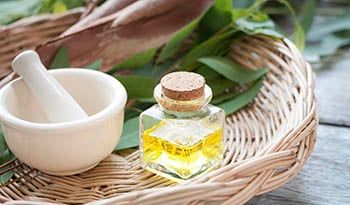Natural Support for Joint Pain

If you suffer from joint pain you’re not alone. According to a National Health Interview Survey over a 30-day period, 30 percent of adults experienced pain, aching or stiffness in or around a joint. The Centers for Disease Control and Prevention estimates that 54.4 million American adults—about 15 percent of the population—suffer from arthritis, the inflammation of one or more joints.
Joints, the physical point of connection between bones, provide support and generally facilitate movement. There are 360 joints in the body, most of which are movable. When healthy, bones within a joint glide smoothly past each other because their surfaces are covered with a smooth layer of cartilage and a membrane that secretes a lubricating liquid called synovial fluid.
Dysfunction and pain occur when either synovial fluid doesn’t secrete properly or the cartilage covering bones deteriorates. Damage can happen suddenly or gradually and may be caused by diseases or injury. The pain and swelling can be acute or chronic and range from mild to severe.
Osteoarthritis, the deterioration of the cartilage that covers the ends of the bones (especially in the knees and hips) that frequently occurs as a natural part of aging, is the most common cause of joint pain. Rheumatoid arthritis, an autoimmune disease in which the body’s immune system attacks the membranes that secrete synovial fluid, is another common cause of joint pain along with gout, lupus and fibromyalgia.
While your first line of defense may be over-the-counter pain medication (ibuprofen, acetaminophen or aspirin), such products can have serious side effects, like kidney damage. Fortunately, there are numerous natural ways to reduce inflammation and alleviate the discomfort caused by joint pain.
Movement Is Key
While you may feel like avoiding movement, don’t. Working out triggers the release of joint-lubricating synovial fluid. Low-impact exercise and stretching help improve range of motion and increase energy and mobility. Weightlifting strengthens muscles so they can better support your joints. Mind-body practices such as gentle yoga, qigong or tai chi can boost strength, energy and flexibility.
Go Mediterranean
If the cause of your pain is rheumatoid arthritis, eating an anti-inflammatory or Mediterranean diet may help reduce your symptoms while improving heart health and reducing cancer risk. This type of diet entails eating antioxidant-rich fruits and vegetables; beans; whole grains like brown rice and quinoa (which have been shown to lower C-reactive protein, a marker for inflammation); and foods high in omega-3 fatty acids such as fatty fish, chia seeds, flax seeds and walnuts. Using olive oil and cutting back on processed carbohydrates, saturated fats and trans fats can also reduce inflammation.
You can also take an antioxidant and/or an omega-3 fatty acid (look for one high in DHA) supplement and consume more flavonoids, chemical compounds found in soy products, green tea and broccoli.
In addition, if you are overweight, losing weight can reduce the stress on your joints, which can decrease future damage as well as daily pain, especially in your hips, knees and feet.
Supplements to Stay Supple
While studies are mixed, some research has shown that taking collagen, the main structural protein of connective tissue found in bone and cartilage may help decrease pain, making it easier to move, bend and increase flexibility. A recent meta-analysis published in the British Journal of Sports Medicine identified collagen as a supplement “demonstrating clinically important effects for pain reduction in the medium term.”
Glucosamine and chondroitin, components of normal cartilage, may also help reduce pain. An exploratory study published in the New England Journal of Medicine suggested that “The combination of glucosamine and chondroitin sulfate may be effective in the subgroup of patients with moderate-to-severe knee pain.”
Herbs and spices that may reduce joint pain include Boswellia and turmeric. Traditional medicine in Asia and Africa, Boswellia is believed to help treat chronic inflammatory conditions. Some research has shown that it works by stopping the formation of inflammatory molecules called leukotrienes. Used in traditional Chinese and Ayurvedic medicine to treat arthritis, turmeric contains an anti-inflammatory chemical called curcumin that modifies immune-system responses.
Experiment with Essential Oils
Used for thousands of years to reduce joint pain and stiffness, essential oils are rich in nutrients that can help soothe pain and reduce inflammation. Good ones to use alone or in combination for pain relief include lavender, peppermint, thyme, orange, ginger, frankincense, myrrh, clove, rosemary and turmeric. To use them simply dilute with a carrier oil such as coconut or jojoba and massage onto the skin, or add 10–15 drops of oil to your bathwater.
Give Pain the Rub
There are several types of topical natural remedies that can help reduce pain. Look for homeopathic creams that contain ingredients such as arnica or calendula, or try salves that contain capsaicin. Found in chili peppers, capsaicin naturally helps to block pain signals in the body.
References:
- Accessed February 13th,19 https://www.rheumatology.org/Learning-Center/Statistics/Prevalence-Statistics
- Accessed February 13th,19 http://www.cdc.gov/nchs/nhis.htm
- Jordan KP, Kadam UT, Hayward R, et al. Annual consultation prevalence of regional musculoskeletal problems in primary care: an observational study. BMC Musculoskelet Disord. 2010;11:144.
- Liu X, Machado GC, Eyles JP, et al. Dietary supplements for treating osteoarthritis: a systematic review and meta-analysis. Br J Sports Med 2018;52:167–175.
- Clegg DO, Reda DJ, Harris CL, et al. Glucosamine, chondroitin sulfate, and the two in combination for painful knee osteoarthritis. New England Journal of Medicine. 2006;354(8):795–808.
- Grover AO, Samson SE. Benefits of antioxidant supplements for knee osteoarthritis: rationale and reality. Nutrition Journal 201615:1. doi.org/10.1186/s12937-015-0115-z
DISCLAIMER:This Wellness Hub does not intend to provide diagnosis...













































































 Table of Contents
Table of Contents















